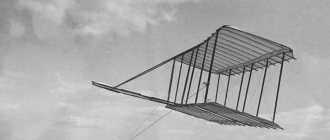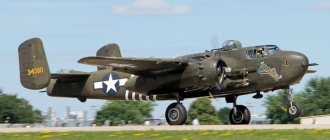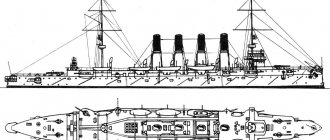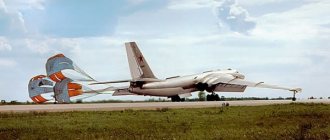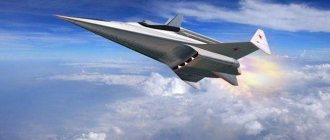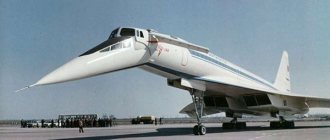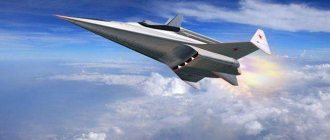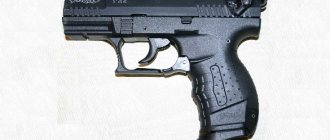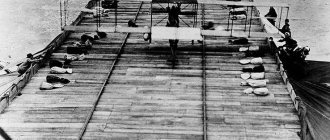Aero L-39 Albatros is a Czechoslovakian training aircraft (TCA), designed for the initial training of future pilots. It is used for piloting in any weather conditions, including difficult ones, and for practicing the necessary combat skills, intercepting enemy aircraft and attacking ground targets. During the flight, the instructor can activate a simulation of the failure of individual systems to hone the student’s actions in an emergency. The aircraft has several modifications that have expanded its purpose. In total, about three thousand copies were released.
History of creation
In 1956, Czechoslovakia produced the L-29 aircraft, which became the winner of the jet training aviation competition for ATS countries. It was distinguished by simple controls and unpretentious maintenance, which is why pilots liked it. But the low modernization potential, combined with the extremely rapid development of aircraft technology, led to the need to create a new training aircraft.
First flight prototype of the L-39 (X-02)
Work on the next aircraft began in Czechoslovakia, which, after the successful L-29, became the unofficial leader of the ATS countries in the field of training aviation. The requirements for the new aircraft were worked out by the Ministry of Defense together with representatives of allied states, including the USSR. The preliminary technical specifications were ready by January 1964.
It stated that the aircraft being developed should have the positive qualities of the L-29, but acquire increased thrust-to-weight ratio and high reliability when operating on unpaved airfields. Requirements were also put forward for the cabin, which should have been made similar to combat aircraft, speed and take-off weight, reaching a minimum of 700 km/h and 3400 kg, respectively.
First flight prototype of the L-39 (X-02)
The final technical specifications with all modifications were put forward on July 15, 1964, and the designation L-39 Albatros was assigned to the aircraft. The development manager was Jan Vlček, and all work was carried out at the new Aero Vodochody plant.
Initially, it was planned to install two engines on the plane, but later this idea had to be abandoned in order to simplify the maintenance of the aircraft and reduce fuel consumption. It was planned to use the Czechoslovakian M-720, but the USSR leadership insisted on choosing the AI-25, which was eventually done.
From 1964 to 1966, designers developed many hull options. After initial testing, it was clear that most of the ideas did not meet the requirements. By 1967, by empirical means, the final version of the project was chosen, according to which the first mock-up of the aircraft was created. Seven L-39 prototypes were produced for state testing. Despite the events of the Prague Spring, development continued without problems.
First flight prototype of the L-39 (X-02) at the Czech Air Force Museum
The tests were successful, but each time shortcomings were identified that required improvements. By 1972, prototypes received improved Soviet AI-25TL. There were also many changes made to the design and some systems. By 1974, the finished version of the aircraft was sent to the USSR for state tests, which ultimately satisfied the country's leadership.
In the same year, mass production of the L-39 began, which continued until 1999. In parallel with the release of basic versions, designers were creating various modifications, but only a few went into production. Over the entire period, almost three thousand aircraft rolled off the production line, including 2,280 training aircraft, of which 2,080 were transferred to the USSR.
Have you ever flown an Aero L-39 Albatros?
Not really
Jet "Albatross" (Czechoslovakian combat training aircraft L-39)
Czechoslovakia was deservedly called the forge of Europe: at its enterprises at different times, machines and equipment were created that were well known throughout the world and were distinguished by high reliability and original design solutions.
With the advent of jet aviation, training aircraft with economical turbojet engines were required for mass training of future pilots. In Czechoslovakia, such a training aircraft (TCA) has been developed since the mid-50s of the last century under the leadership of famous aircraft designers Zdenek Rublic and Karel Tomas. The development and launch of this vehicle into mass production under the designation L-29 “Dolphin” was led by engineer Jan Vlček, who took over the baton from his senior colleagues. In 1962, the national enterprise Vodohody, which was part of the Central Bohemian Engineering Plants, began mass production of the Dolphin. In 1963, the Let enterprise joined it. Until 1973, these enterprises built 3568 L-29. The creation of this aircraft was a major success for the Czechoslovak aviation industry and contributed to the continuation of work in this direction.
In August 1964, the design bureau headed by Jan Vlček and lead designer Karl Dloug proposed two more projects for advanced CTS.
The first was a deep modernization of the production L-29 into the L-129 variant, intended for initial and basic training. The aircraft was the basis of a training complex, which also included flight simulators and ground control equipment (GTC). It was supplemented by the supersonic training vehicle L-39M1 “Makhtrener”.
The second project is the L-39 training vehicle in variants that differ in configuration. As part of the training complex, it was supplemented by training equipment, a flight simulator and a KPO.
In the proposed TC project, the design solutions corresponded to a typical single-engine fighter with a turbojet engine (TRD) of the Air Force of the Warsaw Pact countries. The crew was seated in tandem: the cadet was in the front cockpit, followed by the instructor. The aircraft was designed for possible operation from unpaved runways, which necessitated the placement of air intakes above the wing to prevent the entry of solid particles and water into the turbojet engine during takeoff. The wing had a pronounced sweep. Subsequently, end fuel tanks were installed on it, and before that the entire fuel supply was in the fuselage. The main landing gear with brake wheels was located under the wing, allowing for rough landings. All units have been designed to be easily accessible for replacement. The engine was attached to the front part of the fuselage, and the rear part, together with the tail unit, was removed like a cover.
The aircraft was designed for a Soviet or Czechoslovak turbojet engine with a thrust of about 2000 kgf with an axial compressor. After discussion, they chose the Soviet serial bypass turbojet engine AI-25, developed under the leadership of general designer A.G. Ivchenko for the Yak-40 passenger aircraft. A modification of this engine, known as AI-25V for the L-39 training unit, was carried out by the Mo-torlet company (formerly Walter), as indicated by the index B. The modified AI-25V differed from the basic AI-25 mainly in the oil system, modified for aerobatics, and from the later AI-25TL - with fewer high-pressure compressor stages. During bench tests of the AI-25V at Motorlet, significant sensitivity of the engine to the shape of the supply channel was revealed. The static thrust of the engine was 1400 kgf; its starting was provided by a starter-generator.
The first three prototypes flew with the AI-25V. In 1967-1968, the DTRD was tested on the Il-28 flying laboratory of the Research and Test Flight Institute (VZLU). The modified engine was installed in the rear of the fuselage in place of the gunner's cockpit.
Aerodynamic studies of the new aircraft were carried out in the VZLU wind tunnels in close collaboration with TsAGI scientists. The help of the Soviet side was not limited to this. Representatives of the Soviet Air Force actively participated in the work of mock-up commissions that resolved many issues regarding the cabin layout, accessibility and operational manufacturability of the aircraft. Initially, the forward part of the fuselage was conceived with two large hatches, providing convenient connection to the vehicle with the KL-39 KPO.
The main developer of the L-39 aircraft was the Vodokhody enterprise of the Aero production and economic association (PHO), where in January 1968 they completed the assembly of the airframe of the first flight prototype of the L-39 - X-02. Installation of aircraft systems continued until the end of the summer of 1968.
The X-02 had three anti-surge flaps behind the leading edge of the air intakes and a guide vane at its inlet; the wing center section had a pronounced transverse V. On October 28, 1968, the X-02 was rolled out to the factory airfield in Vodokhody to determine taxiing characteristics. Rudolf Duchony, who has been involved in this program from the very beginning, was appointed VZLU's lead test pilot for complex testing.
On November 4, R. Dukhon performed the first takeoff on the L-39 with the flaps retracted. He had to evaluate the control of the X-02 with the flaps fully extended at a safe altitude and, depending on the result of the check, land with the flaps retracted or extended. This test flight lasted 35 minutes. Having made sure that there were no problems with balancing, the pilot climbed to an altitude of about 1000 m and assessed the operation of the engine, the controllability of the machine with the flaps extended (they were jammed in the take-off position - the landing was made in the same position), aerodynamic brakes and landing gear, as well as at the minimum permissible speed.
After minor modifications, the aircraft was presented to the mock-up commission in early December 1968. During the run after the demonstration flight of the X-02, a tire on the left landing gear burst due to excessive braking, but the pilot was able to keep the prototype on the runway.
At the beginning of May 1969, Duhon first flew the second flight prototype X-03. It featured a modified fairing between the wing and fuselage. At the initial stages of testing prototypes X-02, 03 and 05 with the AI-25V DTRD, small anti-surge flaps located behind the air intake entrance were made of wood for their rapid modification. The stabilizer on the prototypes was made adjustable to select its optimal position.
At the beginning of June 1969, the X-03 was transferred to the first stage of factory flight tests, which lasted until November. The X-03 prototype, which was gradually expanding the boundaries of its flight ranges, was again joined by the X-02 in mid-May. After replacing the engine, it was used to check its operation. On the X-03 prototype, the air conditioning system was completed, and later the AI-25V engine and air intake devices were tested.
The flight characteristics of the L-39 were checked by pilots of the VZLU flight test department R. Duhon, J. Kunz and A. Oswald. During climb on one of the flights on the X-03, an unplanned release of the rear cockpit canopy occurred. Duhon, with a measurement technician in the open cockpit, was able to successfully complete the flight.
In September 1969, the X-05 was handed over for testing. During the first flights, we noticed cases of surging during overloads. The modifications made to the aircraft did not help get rid of this phenomenon. After the eighth flight under the test program, the engine was replaced on the plane, and the car was transferred again to factory tests, which had previously been carried out on the X-03.
At the end of April 1970, factory test pilot Juraj Szuc joined the tests of the L-39 on the next X-06 prototype, which was distinguished by enlarged engine air intakes, started by a Sapphire 5 air starter-generator, manufactured in Czechoslovakia under a French license. "Sapphire" increased the vehicle's autonomy, especially in winter.
During the test flights of the “six”, an unplanned test of the aircraft’s strength occurred: in July 1970, factory chief pilot Vlastimil David safely made an emergency landing on the ground with the landing gear retracted due to the left landing gear not coming out. The cause of the emergency landing was a defect in the rod holding the door.
In mid-May 1970, the X-05, after its paint had been restored and its instrumentation had been replaced, was presented for the second stage of factory testing. This stage included aerobatics, checking controllability in inverted flight and in a spin, determining the limitations of flight performance when pilot Juraj Szuc suffered a prolonged overload. As a result, a wave-like deformation appeared on the upper wing skin.
The wing was dismantled and sent to Let for repairs and local reinforcement. In mid-December 1970, 15 days ahead of schedule, pilot Yu. Shots completed the first flight on the X-07 prototype with the AI-25V engine.
By this time, based on the test results, it became clear that in order to fulfill some technical requirements it was necessary to increase the thrust of the turbojet engine. Of the two proposed engines - "Walter-Titan" and AI-25TL - they chose the Zaporozhye engine and at the beginning of 1971 they began preparatory work to install it on the aircraft.
Meanwhile, in February 1971, the fifth prototype was transferred to the Research and Testing Center 031 for military testing of flight characteristics. Before the summer, about a hundred test flights were performed on it.
In the summer of 1971, we moved on to the next stage of testing - testing the rescue system. The ejection of the VS-1BRI seat from the second cockpit of the L-39 aircraft was first tested at the factory testing stage in November 1970, after which the system passed joint factory and military tests. The seat was tested on the MiG-15UTI and on the third prototype L-39 in its original form. During testing in June 1971, military test parachutists P. Suhomel and K. Plzak ejected from the X-03 in flight.
On the pre-production X-07 (the standard of the zero series), modifications were made to reduce the control force when the front wheel lifts off during take-off.
The front landing gear presented another kind of surprise: at certain speeds, vibrations, known as “shimmies,” arose on it. Chassis characteristics have been studied for quite some time; in December 1971, the X-03 aircraft was additionally equipped with rocket boosters, and on the X-07, a vibration damper was installed on the front support. However, this problem arose again after an increase in the gaps in the chassis elements, which appeared due to their wear. One of the reasons for the appearance of “shimmies” was the shape of the tire tread grooves, which was solved by selecting the profile of the grooves: the central groove became noticeably wider than the two side ones.
In 1971, the Aero Vodokhody enterprise began preparations for serial production of the L-39, which, based on the results of a plant-wide competition, was given the name “Albatross” (the initial letter A indicated that it belonged to “Aero”). The first five production L-39s were handed over to pilots of the Czechoslovak Air Force on September 7. 1971. The production of aircraft of the zero and first series with the AI-25V engine for the Czechoslovak Air Force continued at the beginning of next year.
The official transfer of aircraft of these series for military acceptance took place in March 1972 at Vodokhody. After the flight to Slovakia, the Albatrosses were connected to test work at the Higher Military Flight School named after the Slovak People's Uprising in Kosice.
In October 1971, they completed the modification of the X-02 for the installation of the AI-25TL engine and began replacing the engine with the X-07. The X-07 first flew in March 1972, when factory testing of the X-02 with the new engine ended.
The X-07 underwent factory and partly military tests until mid-August 1972, performing 75 test flights in which the new power plant was evaluated. Greater thrust led to an improvement in the main characteristics: the rate of climb increased, the take-off run and the time to climb to a given altitude were reduced.
The design of the aircraft has undergone fundamental changes, both related to the installation of the AI-25TL engine, and in the course of evolution. After bench tests of the air conditioning system, it became clear that it needed to be equipped with a turbo-refrigeration unit (TCU) at the inlet. Replacing the power plant forced modifications to the TCU and the entire air conditioning system due to hotter air entering the system due to the 9th stage of the engine compressor.
The radio equipment of the aircraft was significantly changed: one part was modernized, and the other was modified according to specified operational and design requirements. Until mid-1978, the prototypes and first production aircraft were equipped with the RTL-11 communications radio station from the L-29 aircraft. Especially for the L-39, the VUST Prague company developed the RTL-31 radio station, tested on the X-03 at the beginning of 1972. Since mid-1978, the aircraft was equipped with a Soviet dual-band radio station R-832, which was first tested on the X-07. After its installation, the keel tip became shorter due to the lack of a radiating antenna in it.
At the end of 1971, the Kvant radar rangefinder was installed on the X-07 prototype to test the acquisition of air targets. Since mid-1978, Kvant was no longer installed on aircraft, as the Soviet Air Force abandoned it.
In parallel, testing of the RSBN-5S Iskra radio navigation system began on the X-07 prototype, first in a single-seat version and later in a double-seat version. This system began to be installed from the sixth aircraft of the first series.
Since 1980, aircraft for the USSR began to be equipped with the SDU-L-39 remote control system. Designers of on-board radio equipment solved two main problems: the first was the actual assembly of radio units, the second was ensuring electromagnetic compatibility to ensure their normal operation. The RKL-4 radio compass antenna on the upper surface of the fuselage was redone several times. Static electricity caused a lot of trouble. The drainage of electrostatic charges was ensured by the convenient placement of a new type of dischargers on the trailing edge of the steering wheel and the ends of the stabilizer.
Changing the alignment of the aircraft after installing the DTRDAI-25TL on it and equipping it with an RV-5 radio altimeter required moving the battery to the instrument compartment in the forward part of the fuselage. Further rearrangement with the transfer of the RKL-41 radio compass led to a change in the electrical system.
On instructions from the Ministry of Defense of the Czechoslovak Socialist Republic, the Aero Vodokhody enterprise developed the L-39V aircraft for towing the KT-04 training artillery target. The single-seat version of the Albatross had an unpressurized cabin: a towing winch drum with a steel cable with a diameter of 5 mm was installed in the rear cabin. The winch was driven by an L-03 pressure turbine located under the fuselage. Behind it, in front of the rear wing fairing, an emergency cable cut-off device was installed.
The development of the X-08 tug prototype coincided with work to replace the power plant. The X-08, modified for the AI-25TL, was manufactured in June 1972, and its tests were completed in 1974.
The additions to the lower fuselage had little effect on the aircraft's flight characteristics. The prototype, unlike the production aircraft, was not equipped with aerodynamic brakes.
The X-07 prototype was considered the standard for the L-39 series, intended for flight schools of the USSR. At the beginning of 1973, the aircraft with a set of measuring equipment was transferred to state control tests in the Soviet Union.
The testing team at the Air Force Research Institute was headed by leading engineer Alexander Fedorovich Kotlyar. The leading pilot was Alexander Petrovich Kholupov. For Soviet specialists, this was not the first and not the last meeting with Czechoslovakian technology: before that they had flown the L-29, and later together they conducted military tests of the L-39, special tests of sports aircraft Z-526F and Z-42. The tests fully confirmed the fulfillment of the stated requirements. The aircraft was highly praised; its characteristics exceeded the level of modern foreign analogues and its predecessor L-29. The new car was significantly superior to it, primarily in its aerobatic performance. There was a good overview from the instructor's seat and sufficient equipment in the cockpit, which was as close as possible to the conditions of a combat aircraft. Emphasizing the similarity of the L-39 with the MiG-21 in landing and climbing behavior as a disadvantage, the need to rescue the crew in a wider range of altitudes and speeds was noted. The possibility of training cadets in the elements of combat use and the autonomy of the aircraft when starting the engine were also outlined here. In general, the full list of shortcomings and necessary improvements was half as long as after similar tests of the L-29.
To complete the main testing program of the basic training aircraft, later designated L-39C, additional tests were carried out in 1974: life support systems - on the X-02 at the beginning of the year and on the X-06 - operation from unpaved airfields in the spring.
The first ten production aircraft for the Soviet customer passed control tests, and after minor modifications they were transferred for operation. In 1973, 14 L-39s were delivered to the USSR, in 1974 - 55. The first to begin mastering the L-39 were cadets and instructors of the Chernigov VVAUL, who received “albatrosses” in April 1974. This was preceded by the training of a group of VVAUL pilots and engineers at the flight school in Kosice and at the Zaporozhye Motor Plant. All improvements recommended during the first year of operation were taken into account in the 1975 standard, tested at the end of 1974.
In 1974, they began to replace the DTRD on the first series aircraft operated in Czechoslovakia with AI-25TL engines, and by the end of the next year there was not a single aircraft left with the AI-25V engine.
To increase the export potential of the L-39 aircraft and meet the needs of the national air force, Aero designers began developing a modification with an increased combat load in 1973. Initially it was designated L-39Z, and the following year it was included in the State Planning Committee. In the second half of the 1970s, the main efforts were concentrated on this work, the goal of which was to create an aircraft with an affordable price for advanced pilot training and a light combat aircraft.
The work was completed in two stages. On the first stage, the wing was reinforced with four pylons: external ones for combat load and internal ones for external fuel tanks (PTB), to which fuel fittings were connected. The variant was later designated L-39ZO. At the second stage, the fuselage was modified: a number of units were moved and the cut of the skin was changed, and a container with a GSh-23 double-barreled cannon was installed underneath it. To test a cannon installation with an ammunition box in the fuselage, a decommissioned X-03 was used as a ground test bench.
The installation was tested by fire at the end of 1974.
The construction of the X-09 prototype was completed in June 1974, its flight was performed by Yu. Schoutz. Key tests in the L-39ZO program were launching rockets and their effect on engine performance, testing the strength of the standard landing gear at increased take-off weight, as well as dropping bombs and anti-tank tanks. It was necessary to perform static strength tests of reinforced airframe components. “Nine” was also used to test the cannon installation. For control tests of the Z0 variant, completed in March 1976, the X-10 prototype was used. On the “ten” they tested a new chassis with widened wheels, for which it was necessary to enlarge the niches due to the boules on the upper wing skin near the fuselage.
In June 1976, a comprehensive examination of the L-39ZO aircraft was completed under the joint factory and design testing program. At the same time, the flight characteristics were checked, the aeroelasticity of the wing with four pylons and the load placed on them was assessed: according to the test results, no additional restrictions were introduced in comparison with the L-39C with the old wing. There were no adverse phenomena in the controllability and behavior of the aircraft; the change in the obtained characteristics was proportional to the increase in mass and drag. Certain difficulties emerged when dumping 150 and 350 liter tanks, both empty and filled with water simulating fuel. After being separated from the locks, the 350-liter tanks were rotated around a transverse axis and, at a certain speed, collided with the trailing edge of the wing in the area of the flaps. In another case, the PTB, after being dropped, was pressed against the leading edge of the wing and fell off from it only during the run after landing. The defect was eliminated by installing stabilizers in the rear of the tanks.
When firing from the GSh-23 at high angles of attack and overloads, the engine overheated due to changes in pressure at its inlet. The installation of various powder gas localizers at the barrel end did not give satisfactory results, so an angle of attack sensor was included in the cannon firing circuit. It provided blocking of fire in extreme modes. The X-11 prototype, built in the spring of 1977, was also used in these tests.
To use the L-39ZA aircraft as a photo reconnaissance aircraft, the PFK-5 photo container was tested on it. Control military tests of the aircraft were completed at the end of 1977. After them, thorough checks of the machine were carried out in the USSR and the aircraft was prepared for production.
The L-39 trainer was a major achievement of the Czechoslovakian aviation industry. In 1976, its creators, led by Jan Vlček, were awarded the Klegment Gottwald State Prize. The Albatross was awarded gold medals at the 15th International Engineering Fair in Brno (1973) and the International Fair in Leipzig (1979). The aircraft was purchased by 23 countries around the world for their air forces. Between 1973 and 1990, the USSR acquired 2,080 L-39Cs out of 2,784 built, including 2,244 L-39Cs.
In general, the aircraft concept became the basis for further modifications. Even at the design stage of the L-39 in the 60s, a more advanced version of the L-39S aircraft with a 2000 kgf thrust engine, with blowing off the boundary layer from the leading edge, in front of the flaps and ailerons, was considered as a future prospect. Thanks to this, the maneuverability of the aircraft was significantly increased. This option remained unrealized.
The emergence of a new generation of aircraft served as a signal for the development of modern systems with an increased share of electronics, providing a more effective solution to navigation and combat missions. The general trend towards increasing the combat load inevitably led to a more powerful power plant. An enterprise in Zaporozhye began to work on its creation together with Czechoslovak specialists. The work eventually resulted in the modernized L-39MS, which first flew in September 1986. At the same time, a variant of the L-39MSV target towing aircraft was created. The maximum program for the L-39MS provided for the creation of an aircraft for basic training of military pilots after 2000.
Jan Volchek did not get to see the first takeoff of the L-39MS. Since 1981, his work was continued by the chief designer of Vlasti-mil Havelka. The development of the project was directly supervised by engineer Alois Benetka and lead designer Emilie-an Postl. The desire to preserve the good qualities of the L-39 made it possible to create an aircraft that meets the requirements of the time.
In serial production, the aircraft received the designation L-59. Its shape has not changed noticeably, but the filling and airframe have been modernized. At the same time, the manufacturability of manufacturing was improved, the service life was increased, and new structural materials and technical processes were used. It differed from the L-39 in its reinforced airframe structure, a new avionics complex (including a head-up display), as well as a more powerful DV-2 turbojet engine, developed jointly by the USSR and Czechoslovakia. The aircraft had an elongated nose cone and a slightly modified shape of the vertical tail. Three L-39MS were delivered to the Czech Air Force in 1991 and two in 1992.
In comparison with the L-39, the main advantage of the L-59 is primarily the DV-2 engine, the thrust of which is 500 kgf greater than the previous one. It was developed by order of the Czechoslovak government in (Zaporozhye) and is mass-produced in Slovakia.
Political changes and the refusal of the Russian Air Force to use single-engine aircraft, unfortunately, have had a negative impact on our cooperation. The decline in production at the turn of the 90s and the loss of the main customer had a significant impact on the subsequent activity program of the company, which began to focus its developments on Western partners.
Of the two thousand aircraft delivered to the USSR, about 800 continue to be used by Russian aviators and about 300 by Ukrainian ones. There are several programs to ensure the normal flight operation of these “albatrosses” until the advent of new generation Russian training equipment. The Russian program provides for the restoration and provision of spare parts for the L-39 by the domestic aviation industry. This work has been carried out by the V.M. Myasishchev Electromagnetic Plant since 1994. The program includes two stages:
on the first stage, outdated Czech components are replaced with domestic ones, while technologies for repairing imported products are being developed at Russian enterprises;
the second involves replacing Czech equipment and units with modern domestic equipment and carrying out design improvements in order to improve safety and performance characteristics.
There is an interesting program proposed jointly with the Israeli company IAI. The aircraft, presented at Le Bourget in June 2003 in the Israeli pavilion, was equipped with modern avionics, a satellite communications system and an on-board computer. Israeli avionics allows you to adapt the cockpit of the L-39 Su-27 and MiG-29. Zaporozhye engine builders have prepared for this aircraft a new modification of the DTRD AI-25TLSh, which was first tested in flight on this aircraft on June 13, 2002 by test pilot of the State Aviation Research Center of the Ukrainian Armed Forces Eduard Sotnikov. The installation of a more advanced and powerful engine made it possible to significantly improve the dynamic characteristics of the aircraft and the safety of flights at low altitudes. Given the difficulties in financing the armed forces in countries operating the L-39, other alternative proposals cannot be ruled out. Therefore, the history of this aircraft is still far from over.
Combat training aircraft L-39:
I—radome of the Kvant radar rangefinder; 2 — pneumatic system pressure gauge window; 3 — hatch for charging pneumatic and oxygen systems; 4 — instrument compartment hatch cover; 5 — canopy visor; 6 — cadet’s cabin; 7 — instructor’s cabin; 8 — radio compass compartment RKL-4 of the short-range navigation radio system RSBN5S “Iskra”; 9 — technological maintenance hatch for DTRD AI-25TL; 10 — technological hatch for servicing the Safir-5 turbostarter;
II—technological service hatches for DTRD AI-25TL; 12 and 17 — service hatches for rudder wiring; 13 — built-in footrests; 14 - step; 15 — angle of attack sensor vane; 16 — antenna radome of the R-832M radio station; 18 — air intake drain wedge; 19 — ejection seat VS-1BR1; 20 — hatches for servicing radio and electrical equipment; 21 — brake wheel 650×185 mm; 22 — wheel 430×150 mm; 23 — shimmy damper; 24 — anti-surge air intake flaps; 25 — rudder; 26 — RV-UM antenna; 27 — hatches for fuselage docking fittings; 28 — wing fuel tank; 29 — wing aeronautical light (red); 30 — landing light; 31 — cockpit canopy handle; 32 — radio transponder antenna SRO-2 (3 bands); 33 — underwing suspension pylon; 34 — FAB 500ts aerial bomb; 35 - 350-liter external fuel tank; 36 — NAR block UB-16-57UM; 37 — mechanical chassis position indicator; 38 — FAB 200ts aerial bomb; 39 — fuel tank stabilizer; 40 — air turbine L-03; 41 — tow rope cutter; 42 — tow rope; 43 — wheel 450×165 mm; 44 — nose shock-absorbing strut of the L-39MS chassis; 45 — container for the GSh23-2 gun; 46 — brake wheel 650×215 mm; 47 — flare cassette; 48 — ejection seat VS-2; 49 — MRP-56P antenna; 50 — aileron; 51—aileron trimmer; 52 — slotted flap; 53 — service hatches for control rods; 54 — turbostarter nozzle “Safir-5”; 55 and 63 - flow turbulators; 56 - static electricity dischargers; 57 — brake flap; 58 — PVD; 59 - GOES 520; 60 — operational training missile R-ZUD; 61 — starting device APU-13M-1; 62 — air-to-air missile P-3C(K-13A); 64 — wing tank filler cap; 65 — main tank filler cap; 66 — container with equipment; 67 - 150 liter external fuel tank
N. SOIKO “Model designer” No. 2'2007
Flight performance
The aircraft is designed for one or two people, depending on the type of modification. Its length is 12.13 m, and its height is 4.47 m. The wingspan is 9.46 m, and its area is 18.8 m². The empty weight of the L-39 does not exceed 3395 kg; the normal weight for takeoff is 4337 kg. The limit is 4,700 kg for paved runways and 4,600 kg for unpaved airfields.
L-39C. Scheme.
Technical characteristics are provided by the AI-25TL engine, which produces thrust up to 1720 kgf. The cruising speed is 390 km/h, the maximum during horizontal flight reaches 760 km/h, and when tilting, the permissible values are limited by a safety margin of 900 km/h. Maximum overload: +8/-4 g. The rate of climb at low altitude reaches 22 m/s. The plane can reach an altitude of 6 km in 6.4 minutes, and rise to 10 km in 16.9 minutes. The stall speed after the flaps and landing gear are extended is 160 km/h.
The L-39 can fly up to 1015 km if its tanks are fully filled, holding up to 1014 kg of fuel. When flying in inverted mode, it can hold for up to 20 seconds. The service ceiling is limited to 11,500 m. For takeoff, a run of at least 480 m is required, and for landing, a run of 650 m is required.
On board there may be weapons in the form of two bombs, as well as several guided or unguided missiles on wing mounts. Various combinations are possible. For example, with the installation of 32 S-5 missiles and two UB-16-57U.
Design
The L-39 is an all-metal monoplane with a straight down wing and horizontal tail. Its aerodynamic design is of the normal type, and the chassis has become tricycle.
Design of the L-39 aircraft
Fuselage
The aircraft fuselage consists of two separable elements - the front and tail sections. They are fastened with special frames. The first contains several compartments, including a pressurized cabin, a fairing, and four compartments: bow, fuel, engine and electronics. Inside the fuselage there are five soft-type fuel tanks, to which two air ducts from the engines are installed. The tail section is solid and can only be removed completely. It houses the motor extension pipes and the jet nozzle.
Wing
The straight trapezoidal wing is a three-spar wing. It is attached to the fuselage at four points. The middle spar contains mechanisms responsible for the main landing gear. At the rear there are double-slotted flaps, which can be in three fixed positions. There are compensator trimmers on the ailerons. In the space from the front to the middle spar there are brake flaps that are activated automatically when a certain speed is reached. Fuel tanks are mounted on the wingtips, divided into three sections. The fuel is located only in the middle, and there are headlights, antennas and various units installed at the front and rear. There are also air pressure receivers on the wings, and two beam holders for missiles or bombs are located below.
Airplane tail
The keel of the trapezoidal tail is of the two-spar type and has a set of stringers and ribs. The latter houses rotary units for the rudder, supplemented by aerodynamic compensation in the absence of a trimmer. A stabilizer is attached to the rear of the fuselage, which has a through element in the middle. The elevator has two trimmers. The first operates in automatic mode, and the second is controlled by buttons from the cockpit. To reduce the effort, a spring booster was installed on the handle.
L-39 chassis
The three-wheel landing gear can be retracted during flight using a hydraulic system. The main pillars fold into the compartments between the middle and rear side members. The front one moves into the nose compartment inside the fuselage. The main landing gear wheels are braked and tubeless. Another model of self-orienting non-braking type is installed on the front pillar. The brakes on the wheels are hydraulic. The struts have nitrogen-oil shock absorbers.
Engine AI-25TL
The AI-25TL engine used is a dual-circuit twin-shaft turbojet. It has a 12-stage compressor and a three-stage gas turbine with an annular combustion chamber, a special extension tube and a jet nozzle.
Engine AI-25TL
The engine is started using an air starter. Overheating is prevented by a special mechanism RT-12-9. The AI-25TL is complemented by the Sapphire-5 auxiliary power unit with a single-stage compressor. It is started by an electric starter from the on-board battery.
Fuel system
The main fuel system was five soft tanks located inside the fuselage. Their capacity is 1100 liters. It is complemented by two tanks at the wing tips, each of which carries another 100 liters. The main tanks are refilled through one neck, and the wing tanks have their own. The fifth, which has become consumable, has a booster pump. The amount of fuel is controlled by a capacitive fuel meter.
Fire protection system
On board there is a special fire protection system SSP-2I with a BI-2I unit. It is connected to six sensors and immediately notifies the pilots if a fire occurs. It also includes a fire extinguisher consisting of methylene, ethyl and freon. All protection is directed to the engine compartment, and the system is activated manually on the dashboard.
Hydraulic system
Using hydraulics, the aircraft controls the landing gear with flaps, brakes and releases the emergency turbine. It works due to a hydraulic pump, which supplies energy in the desired direction. If the main hydraulic system fails, the emergency system is activated, which allows you to control the flaps, extend the landing gear, brake and start the turbine. It can operate for a short period of time even after an engine failure. This is enough to land in an emergency.
Electrical equipment
The main source of electric current on board is the VG-7500Ya generator. Its power is 9000 W, it has control equipment and a battery. If necessary, a spare generator LUN 2117.02, whose power is limited to 3000 W, can be used. There are two converters on board that provide AC power. To connect a ground-based source of electricity, according to the RLE, there is a special plug connector.
Flight and navigation equipment
The L-39 has combined speed indicators, an altimeter, an attitude indicator, a compass, a variometer, a radio altimeter and other instruments for aircraft control and navigation in the air.
They are installed in both cabins. Some are powered by air pressure receivers. The instructor's department has additional equipment for simulating emergency situations.
Radioelectronics
Electronic equipment on board the L-39 includes: radio communications, radio navigation and radio engineering. The first includes a radio station, an autonomous intercom and an antenna for communication. The second consists of short-range navigation and landing instruments, a compass, an altimeter and a marker radio. The third includes a set of CP0-2M, antennas and a control panel with an explosion-disaster panel.
Oxygen equipment
The L-39 features a two-seat pressurized cabin with ventilation, pneumatic hoses and air pressurization. Air conditioning is standard, involving mixing hot and cold air flows. With the help of a pressure regulator, free ventilation is carried out provided that the aircraft is at an altitude of up to 2 km, after which the pressure increases. There is also an individual type of air conditioning for each pilot, and it is even present on the suits. The training L-39s are equipped with special equipment KKO-5, which operates at an altitude of up to 40 km.
Aircraft emergency escape equipment
There are special elements installed at the front and rear of the cabin that are responsible for tilting the canopy. The ejection unit includes a parachute seat, a firing mechanism and a rocket engine. To prevent pilots from colliding during a simultaneous ejection, an electrical system is used for sequential launch. If the aircraft is used over water, the crew is provided with life jackets.
Armament
The aircraft can use bomber weapons and guided or unguided missiles. There is sighting and photo-control equipment on board, which ensures accurate hitting of targets when dropping bombs, correct guidance of missiles and photographic recording of actions.
Aero L-39 Albatros weapons
The weapons are suspended on two beam holders, on which single missiles, multi-barrel units or launchers can be installed. The plane is also equipped with flares. The weapon can only be used at speeds above 310 km/h, and the instructor can block certain targets if necessary.
Aircraft design Albatross DD (BI)
The Albatross DD aircraft is a braced biplane with a semi-monocoque wooden fuselage with working skin.
The wings are straight, the base is a wooden frame covered with canvas, the struts between the wings are made of teardrop-shaped steel pipes. The horizontal and vertical tails are swept. The landing gear is non-retractable, tricycle with a tail spike.
The power plant consists of an in-line 6-cylinder liquid-cooled Mercedes piston engine with a power of 110 (Benz) or 120 (Argus) hp. with a wooden two-blade propeller.
The crew cabin is two-seater: the pilot-observer is in front, the pilot is in the back.
Multipurpose aircraft Albatross BI
Modifications
During the development and operation of the L-39, more than ten variants were produced. Some of them remained projects that did not make it onto the production line. Most of the aircraft were produced in the basic modification. It was intended for pilot training.
Modifications of the L-39: • L-39C – the basic version of the aircraft, used for initial and basic flight training. • L-39CM – modernized model of L-39C. It has received some improvements to improve operation. • L-39ZO – training modification with on-board weapons on four suspensions. It was developed in 1976 and can be used as a light attack aircraft. • L-39ZA – an improved version of the 39ZO, which received an additional GSh-23 cannon with two barrels under the fuselage. • L-39ZAM – modernization of an armed training aircraft with a GSh-23 cannon. Notable for making minor changes. • L-39V – a special model of the L-39, equipped for towing aerial targets used for shooting training. • L-39D – Ukrainian L-39, intended for civilian use. Features complete demilitarization. • L-39M1 – training version of the aircraft from Ukraine with the engine replaced by an AI-25TLSh with increased thrust and improved performance characteristics. Released in 2009. • L-39M – a new Ukrainian L-39 with an on-board BTK-39 simulator, which allows you to create an imitation of the operation of the MiG-29 sighting system. Used since 2015. • L-39MS (L-59 Super Albatros) – version of the aircraft with a DV-2 turbojet engine with increased thrust. New electronic filling and improved catapult. • L-159 - an aircraft based on the L-59, became an ideological continuation of the L-39 and received F124 engines. Was introduced in 2001. • L-39NG – a prototype aircraft powered by a Williams FJ44 engine. It is at the state testing stage.
Using the L-39 design, Romanian inventors developed their IAR-99 aircraft for pilot training. It can also be considered one of the modifications of the Czechoslovak training aircraft. It was put into operation in 1987, replacing the existing L-29 with the L-39.
Description
The Aero L-39 Albatros (diminutive name - "Ellie") was mass-produced by the Czech airline Aero Vodochody. From 1968 to 1999, 2,868 units of the L-39 model and 80 units of the modernized version of the L-59 were produced. The L-39 training aircraft is still in service in more than thirty countries around the world (Russia is among them).
The L-39 Albatros is a single-engine, two-seat jet trainer aircraft. It is more often used for initial pilot training and advanced training for experienced pilots. Possibility of use as fighters is limited by flight characteristics (small size, insufficient armament). However, the model is quite effective in the fight against reconnaissance drones, unmanned aerial vehicles, and helicopters.
Operating countries and combat use
The latest information about operational and operational L-39s dates back to 2016. At that time, it was in service with 37 countries, including Russia, Ukraine, Belarus, Azerbaijan, Georgia, North Korea, Egypt, the Czech Republic and Bulgaria. Previously, the aircraft was used by Iraq, Latvia, Hungary, Romania and a number of other countries.
The main use for the L-39 was pilot training. But its increased popularity, combined with its easy handling, attracted attention to the aircraft as a sports car. It has been used by aerobatic teams from the USA, Canada, France, Latvia and Russia.
The planes took part in the civil war in Libya, where there was a conflict between two tribes. L-39s were also used during combat operations in Afghanistan. Then they made 11 sorties. The aircraft was used several times by the Ethiopian military to perform various tasks.
The L-39 managed to outperform the L-29 on which it was based and received much positive feedback from pilots. It was distinguished by its ease of operation and good performance, which made it possible to train future pilots with maximum efficiency. Many countries still use this aircraft, which indicates its success in the world market. It is possible that the tested L-39NG will receive no less popularity and will be purchased by many countries for use in educational institutions.

